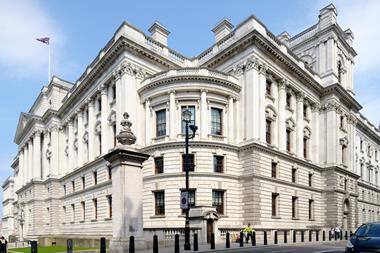A bomb alert in Birmingham could have put Legal & General's offices out of action for weeks, instead its disaster recovery plan was put to the test.
Insurance companies and brokers often advise clients to develop plans that minimise business interruption in the event of a catastrophic breakdown. The benefit is that valuable customers and their revenues can be safeguarded should such a crisis occur. And, further down the line, the pressure on premium rates is eased.
While underwriters, brokers and risk managers are all willing to dish out advice on post-disaster continuity, can they convince their own management to adopt the advice? And if so, does the advice work?
Legal & General had a chance to test its disaster recovery plan last November when the Real IRA planted an 88lb car bomb close to the company's 400-strong office in the centre of Birmingham.
The bomb was the same size as the one that devastated shops and offices in Ealing, west London, earlier in the year. The Ealing bomb exploded causing widespread damage, but the Birmingham bomb was disarmed in a controlled explosion. Now the dust has settled, Legal & General has evaluated the effectiveness of its plans.
Exclusion zone
Legal & General staff were alerted to the bomb early on 4 November. Fortunately, this was a Sunday, giving the company time to react before staff were due to return to work on Monday morning.
The firm's office, near New Street station, was in the exclusion zone for the controlled explosion carried out by the security services. No one was hurt in the controlled explosion and the building was not damaged, but with the offices in the exclusion area, no one was allowed near or in the office.
The threat to L&G was serious. The company's Birmingham operation has nearly 400 staff, who provide customer support such as claims handling for more than one million policies per year. It was vital that the company was able to continue to respond to customer enquiries and to manage any claims through the period of exclusion. With limited information on when staff would be able to have access to the offices, it was essential that a back-up system was in place.
A command team, consisting of key members of management and including the firm's insurance managing director, John Castagno, met early Monday at a local hotel, which would serve as a co-ordinating centre.
Temporary offices
Short-term back-up arrangements were made at Legal & General's office in Ipswich. Staff there would take policy administration and claims calls from 9am on Monday. The IT department re-routed incoming calls and the Post Office was asked to hold all post.
Contact was also made with business partners, such as the Woolwich, loss adjusters Crawford & Co and McLaren, and Europ Assistance which handles travel claims, plus Legal & General's own staff across the business. They were told of the situation and the action that had been taken.
The company had already identified temporary office space in Coventry as back-up accommodation. Arrangements were made to transport and accommodate the staff needed at these offices. In less than eight hours, the business information services team at Legal & General's Kingswood offices had all the systems running and tested so that business could be managed from the Coventry site, early Tuesday.
However, near midnight on Monday the company was advised that the exclusion zone was to be lifted and staff could go into the Birmingham office from 8am on Tuesday. So staff were then told to go to Birmingham rather than Coventry and the routing of calls was re-established to Birmingham.
Although the temporary site was not used, the exercise gave Legal & General confidence that it could handle a crisis and continue to run its insurance operation. Most importantly, during the incident, the high standard of customer service was maintained.
The recovery dossier
Hosted by comedian and actor Tom Allen, 34 Gold, 23 Silver and 22 Bronze awards were handed out across an amazing 34 categories recognising brilliance and innovation right across the breadth of UK general insurance.













































